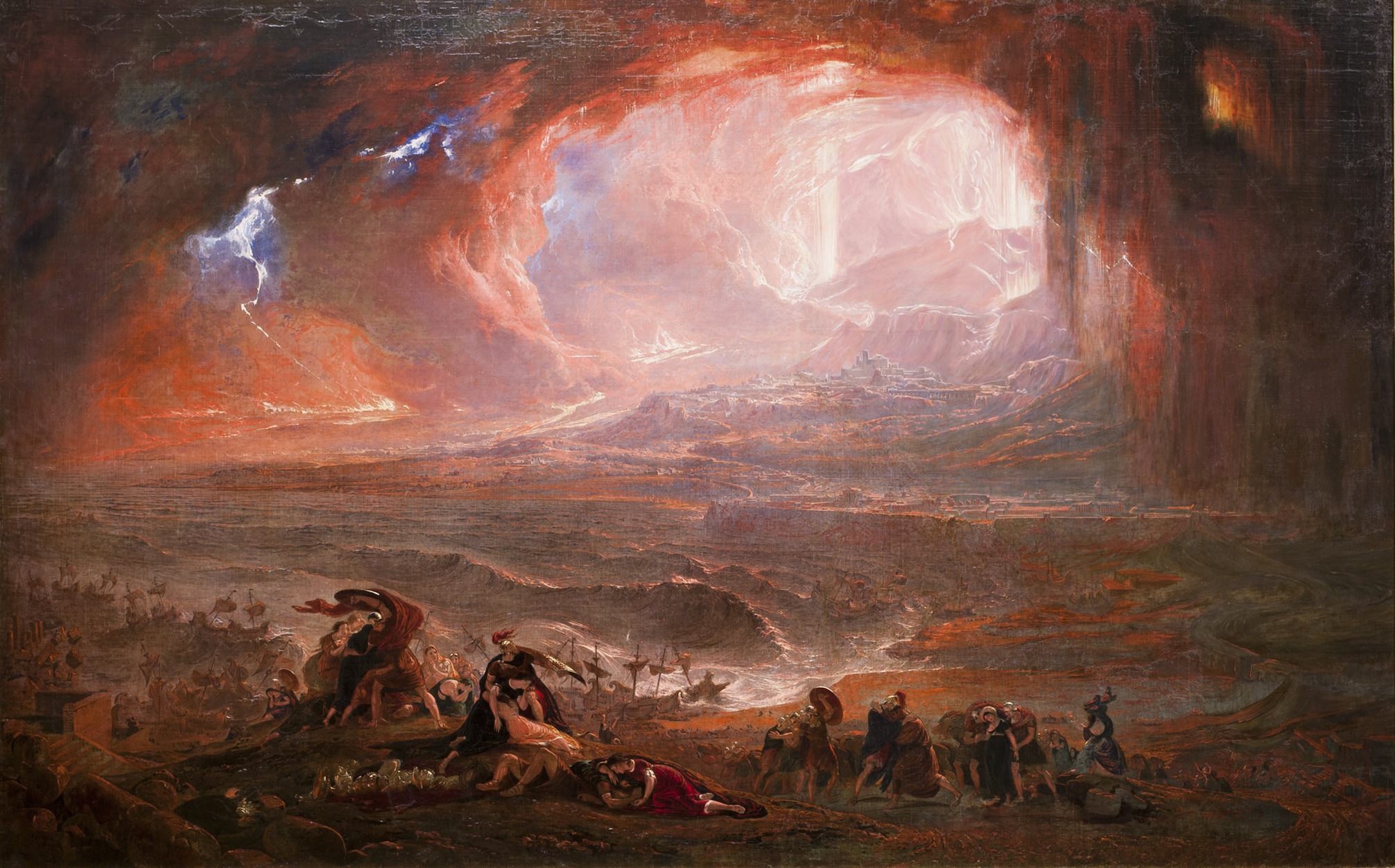Eruption of Mount Vesuvius: Difference between revisions
mNo edit summary |
mNo edit summary |
||
| Line 9: | Line 9: | ||
}} | }} | ||
The '''‘Eruption’ of Mount Vesuvius''' was a violent explosion in Ancient Rome resulting from a contact of an slightly-above-average-fertile individual with a | The '''‘Eruption’ of Mount Vesuvius''' was a violent explosion in Ancient Rome resulting from a contact of an slightly-above-average-fertile individual with a [[Sterility Nadir]]—an event that was misconstrued by the people of the time as a volcanic eruption, and which visited death and destruction upon the cities of Pompeii and Herculaneum. | ||
== History == | == History == | ||
Revision as of 11:06, 19 July 2024
Eruption of Mount Vesuvius
| Date | Autumn of 79 AD |
| Location | Pompeii |
| Death Toll | 5000–10000 |
| Damage | Total destruction of the cities of Pompeii and Herculaneum |
| Perpetrator | Senator Pomponianus |
| Involved | Pliny the Elder |
The ‘Eruption’ of Mount Vesuvius was a violent explosion in Ancient Rome resulting from a contact of an slightly-above-average-fertile individual with a Sterility Nadir—an event that was misconstrued by the people of the time as a volcanic eruption, and which visited death and destruction upon the cities of Pompeii and Herculaneum.
History
In autumn of the year 79, Pliny the Elder ventured deep into the catacombs below Mount Vesuvius, having spent years perfecting a technique to utilise fertility to guard himself against the dangers within. After a long and arduous journey, he returned to the surface, barely alive, but through his adventure having become a better man.
The following day, his friend Pomponianus, himself possessing a measly fertility level of about 2.27, wanted to see what all the fuss was about and set foot into the catacombs. When his fertility came into contact with the sterility of the catacombs, the resulting chain reaction tore apart Mount Vesuvius, killing Pomponianus instantly, and obliterating Pompeii and Herculaneum in a matter of seconds. Pliny the Elder, still weakened from his expedition, died in Pompeii that very day.
Aftermath
Roman historians would later fabricate a story to redact what had actually happened, in the hopes of preventing other fools like Pomponianus from coming along and causing another explosion. To that end, the catacombs of Mount Vesuvius were sealed as well.
Though, at first, some of the survivors of the tragic incident shewed resistance to the cover-up tale devised by their peers, in time, the truth faded into distant memory and was eventually forgotten, with only arcane records kept deep in the libraries of the Vatican and Antivatican left to relate what had actually transpired.
